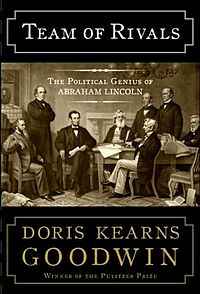 |
| Original graphic courtesy/Edwin Morris |
My final paper for my ethics course. PLEASE NOTE that my citations didn’t transfer into HTML, but I’m more than happy to supply them if needed.
In radio and television, quotes are captured, edited down to a short segment, and interjected into the program between lines of analysis and contextual information. Slang, grammatical imperfections and language quirks are all captured; and in the case of Antoine Dobson, who was interviewed about his sister’s assault, may even be auto-tuned and reproduced in a viral YouTube video. When multiple senses are involved in interpreting an interview, listeners and viewers are better able to immediately understand the content of a quote. Though there may be grammatical errors in much of what the interviewee says, the quote is still decipherable because the viewer or listener is able to take other factors like context, inflection and tone into account.
But in writing, the tools for capturing and communicating quote are not so intricate. Rather than recorded sound bites or video, journalists utilize quotation marks, tiny little squiggles of lines that some call sacred. They are meant to take recorded interviews, cut them down and translate them into organized key points that can be read, interpreted and understood by the common reader. “Wuz” becomes “were;” excessive use of “like” is limited; “Ums,” “uhs” and “you knows” are cut. But at what point does a quote no longer reflect what was uttered by its owner? At what point does a quote become paraphrased? How much tampering can be permitted without eliminating those sacred quotation marks?
“The words we live by are not always the words we see in print,” said Philadelphia Inquirer journalist Doreen Carvaja in a piece she wrote for a journalism ethics newsletter about quotes in the press. But there is a fine line between fixing and altering, as Carvaja acknowledges in her piece. Fixing subject-verb agreement is different than opting for a fancier word, which is different than a completely fabricated quote. “[J]ust how sacred are the sentences between quotation marks?” Carvaja asks.
Journalist Bob Steele evaluates the issue of fixing quotes from a unique perspective. As a journalist and writer for The Poynter Institute, he’s considered an expert on journalism ethics. Oftentimes he’s the interviewer, but he’s also oftentimes the interviewee. As such, he’s seen his own quotes altered and corrected and even butchered.
Sometimes, he said, there are minor grammatical corrections when he knows he said something incorrectly. And sometimes he’s quoted using words he doesn’t even know. “ The reporter either wasn’t listening well or took bad notes.” But, he said, “Sometimes my ‘quote’ is a composite of several things I said at different times in the interview. The words may be accurate but the reporter is playing loose with the context, perhaps the writer’s way of tidying up my thoughts to tighten up the story.”
Steele then introduces a set of columns by Washington Post ombudsman Deborah Howell. The columns address a situation in 2007 when a Post reporter “corrected” a quote by Redskins running back Clinton Portis, in the same paper that a Post columnist quoted him verbatim.
Howell, who as an ombudsman is supposed to interact with the readers and community, addressed numerous reader comments before diving into the issue. In the July 28, 2007 issue of the Post, reporter Howard Bryant quoted Portis as saying, “I don’t know how anybody feels. I don’t know how anybody’s thinking. I don’t know what anyone else is going through. The only thing I know is what’s going on in Clinton Portis’s life.”
According to Post sports columnist Mike Wise, Portis said, “I don’t know how nobody feel, I don’t know what nobody think, I don’t know what nobody doing, the only thing I know is what’s going on in Clinton Portis’s life.”
Some readers questioned why Bryant felt the need to clean up and even change (“doing” to “going through”) Portis’ words. Another reader pointed out that by the time both stories went live on the Post’s website, the grammatically incorrect quote had been changed to match the cleaned up version.
The Post’s policy clearly states, “When we put a source’s words inside quotation marks, those exact words should have been uttered in precisely that form.” Yet the accurate quote in the editorial section, which was recorded on tape, was also altered and corrected to match the inaccurate representation.
In Howell’s column, Bryant (who left The Post shortly after the incident and joined ESPN) defends his actions, saying that during his time at the Washington Post, he frequently changed quotes in order to perfect grammatical errors and to preserve the public images of coaches and players. Working so closely with the coaches and players, he wanted to ensure that he didn’t offend them and risk having them as a potential future source. “Fair is fair,” Howell quotes Bryant.
Wise disagrees with Bryant’s justification, and was upset about his verbatim quote having been changed for the online version of his column to match Bryant’s inaccurate representation.
“I just have a hard time cleaning up anyone’s quotes. I just feel it robs people of their personality. And if I’m not capturing who the person is through the rhythm and cadence of their words, I’m not telling the readers who they are. I just feel people need to be portrayed as they sound, irrespective of whether you’re an aging white coach or a young black athlete. Otherwise, we run the risk of homogenizing everyone.”
The personality that Wise mentions is important in quotes, and ought to be preserved. Video and radio pieces have the added bonus of appealing to (at least) the reader’s sense of sound, but written pieces must communicate to writers without utilizing any senses. Thus, capturing the interviewee’s true “voice” is important in portraying to the reader what the quote is about, and what nuances like sarcasm are incorporated.
In the end of her first column, Howell concludes that quotes should not be changed, and if they are currently “cleaned up,” that practice should be put to an end. “Simply put, quotes should be and sound authentic…The rough draft of history is still history.”
In the history of journalism, the process of recording quotes has changed, according to Post Style editor Henry Allen. Before the invention of the tape recorder, journalists were told to quote the person as exactly as possible, but above all to get a general sense of what was said. But with the introduction of recorders, he argued, the “perfect quote” was feasible. “[W]ith the exact quote we sometimes lost the sense of what was said because the hesitations and digressions in the quote steered readers away from the context.” When the “ums” and “uhs” are not pruned away, they distract the reader from the substance of what is actually being said.
There’s much to be concluded from Allen’s argument. But the general question he raises is what, exactly, the purpose of the quote is. If the purpose of the quote is to capture someone’s opinion to help further a story, then it seems reasonable to correct minor errors and reword as necessary, as long as it adds to a story or helps the reader to better understand. It’s as if the journalist is an interpreter, taking the euphemisms and jargon from the interviewee’s mouth, and using their extensive knowledge of language to interpret, translate and better communicate the interviewee’s interjection.
But if the purpose of a quote is to capture the exact point of one particular source, then it ought not to be fine-tuned. Is a journalist’s commitment to the reader or to the sources they rely on to further their stories?
The New York Times Company, which owns 26 newspapers nationally, and one international publication, doesn’t necessarily distinguish the readers or the sources as more important in their code of ethics: “our goal is to cover the news impartially and to treat readers, news sources, advertisers and all parts of our society fairly and openly, and to be seen as doing so.” However, later in the document, the company specifies the importance of treating readers with respect. “As journalists we treat our readers, viewers, listeners and online users as fairly and openly as possible. Whatever the medium, we tell our audiences the complete, unvarnished truth as best we can learn it.”
Thus, it appears as though The New York Times Company would support the practice of verbatim quoting, in order to convey that “complete, unvarnished truth.” They support, first and foremost, the journalist’s commitment to the audience over the commitment to the source.
In the famous opening paragraph of Janet Malcolm’s The Journalist and the Murderer, she summarizes a journalist as someone who is loyal to a story above being loyal to a source, even to the point of being malicious.
“Every journalist who is not too stupid or too full of himself to notice what is going on knows that what he does is morally indefensible. He is a kind of confidence man, preying on people’s vanity, ignorance, or loneliness, gaining their trust and betraying them without remorse.”
In her book, Malcolm evaluates and critiques a situation in which a writer, Joe McGinnis, earned the confidence of an accused murdered, Jeffrey MacDonald. MacDonald had asked McGinnis to write about the murder case both from the court room and from within MacDonald’s team. Though an accused—and later convicted–MacDonald thought that McGinnis was a friend and confidante who would help him redeem his soiled image, McGinnis was more interested in the story. As Malcolm notes, he betrayed the source in order to provide for the reader (and, likely, for a paycheck).
Ironically, at the time that Malcolm wrote and published the book, she was in the throws of a legal battle about her own use of quotes in her 1984 book, In the Freud Archives. Following the book’s release, psychoanalyst Jeffrey Moussaieff Masson, former project director for the Freud Archives, sued. He claimed that Malcolm had libelously fabricated quotes that she attributed to him.
According to the New York Times, “Malcolm wrote that Mr. Masson had said he hoped to turn Freud’s home into ‘a place of sex, women, fun’; that two prominent psychiatrists considered him ‘an intellectual gigolo,’ and that he himself would one day be considered the ‘greatest analyst who ever lived.’”
Though Malcolm recorded many of her interviews, the disputed quotes weren’t on any of her tapes. Instead, she had kept notes (which she misplaced and, in 1995 a year after the verdict, subsequently found).
Even without her notes, Malcolm won the case. After more than a decade of court proceedings, a Supreme Court trial by jury finally found against Masson on the grounds that, whether or not the quotations were genuine or true, more evidence was needed to rule against Malcolm. However, though Malcolm won the case, she failed to honor either the readers or the source.
By writing something that she couldn’t completely prove and that inaccurately portrayed the person she covered, Malcolm disrespected and disregarded her readers. She also managed to fulfill her own prophecy, gaining her interviewee’s trust and then betraying them without remorse.
Because Malcolm didn’t have an actual transcription or recording of the interview, the case becomes a matter of he-said, she-said. Neither side had adequate proof because neither side bothered to record the interview.
Stephan Glass, the New Republic Reporter famous for his fraudulent and dreamed up articles, and dramatized in the 2003 movie “Shattered Glass,” used this issue to his advantage in trying to defend his case against the fraud charges. Sometimes, he said, the only proof a journalist has is his or her notes.
A journalist’s notes used to be adequate proof of what commenced during an interview, but with the introduction of modern technology and high-tech recording gear, there’s no reason why there should be any dispute over the accuracy of quotes. Before, a journalist’s tools in quoting sources where limited to their own ears and contextualization, before the quote was crafted between a set of quotation marks. Now, there are recorders to ensure that everything is captured and available for further proof.
Recorders can, and should, clean up many of the ethical issues addressed in this paper. Journalists no longer have to call sources back to confirm or re-state quotes. They can prove the legitimacy, or be held responsible for the butchering of the quotes they use. Though Steele mentioned before that “perfect quote” was feasible, readers weren’t distracted by digressions and interjections.
Before, journalists were a sort of translator, transitioning quotes from ungrammatical messes of half-sentences into eloquent, well-thought-out concepts. The problem with that practice is that is disregards the reader’s intelligence. Having a complete quote allows the reader to understand the context of a situation, and the character of the individual being quoted. Though it’s justifiable to make minor grammatical changes, it’s always important to ensure that the integrity of quotes remains intact.
In evaluating quotes, there are numerous ways that they can be altered. But determining which changes are ethical and which aren’t is more challenging. Like all ethics rules within journalism, they should be clearly outlined somewhere within the publication’s code of style or ethics, in order to ensure consistency, and to avoid any situations like that at The Washington Post.
The decision is oftentimes left up to the individual writer, however, since they are the translators collecting the hard quotes and producing them in finished pieces. Thus, publications or publishers should set clear rules about various black and white issues with quoting sources. There are the obvious: Never plagiarize or make up a quote; never omit words that change the meaning of a quote; never misrepresent a source.
But there are finicky details as well: use brackets for any word or letter that has been changed; only change words that take away from the general understanding of the quote, or which are not easily understood outside of the context of the interview; minimize the use of ellipses in order to ensure a quote accurately reflects a source’s thoughts; record everything; keep (and store) diligent notes.
Yet above all, publications must communicate to journalists the importance of the commitment to the readers, above even the sources. With that mentality, journalists can ideally make the best decisions in their writing and ultimately limit the issues, legal and otherwise, that the company or paper would face.
After two columns and a thorough examination of why Bryant and White each acted in their own respective ways, Post columnist Howell simplifies the issue to one concise rule. “It boils down to this: Be honest with readers.”











